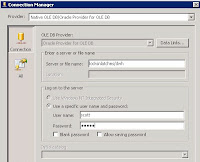Use the formula in "calc_name" or "calc_df" to calculate the number of inclusive weekend dates in a date range. Inclusive means that if e.g. the start date is a Saturday, it is counted as 1. The code is pure SQL Server T-SQL, with no need for helper tables or cursors.
Note:
- "Set datefirst" is not needed, but can be used to check the correct outcome of the "calc_df" calculation
- The "calc_df" function is more robust, since it does not rely on localized day names. But it is a bit more verbose and obfuse then "calc_name"
- Column "correct" contains the correct number of weekend dates that can be used as a reference for the calculation
- Subquery X contains some random test values for start- and enddates
SET DATEFIRST 7
SELECT
x.*,
(DATEDIFF(wk, sd, ed) * 2)
+(CASE WHEN DATENAME(dw, sd) = 'Sunday' THEN 1 ELSE 0 END)
+(CASE WHEN DATENAME(dw, ed) = 'Saturday' THEN 1 ELSE 0 END) as calc_name,
DATEDIFF(wk, sd, ed) * 2
+CASE DATEPART(dw, sd)+@@datefirst WHEN 8 THEN 1 ELSE 0 END
+CASE DATEPART(dw, ed)+@@datefirst WHEN 7 THEN 1 WHEN 14 THEN 1 ELSE 0 END as calc_df,
@@DATEFIRST as datefirst,
(DATEDIFF(wk, sd, ed) * 2) as weeks,
CASE WHEN DATENAME(dw, sd) = 'Sunday' THEN 1 ELSE 0 END as sun_start,
CASE DATEPART(dw, sd)+@@datefirst WHEN 8 THEN 1 ELSE 0 END as sun_start_df,
CASE WHEN DATENAME(dw, ed) = 'Saturday' THEN 1 ELSE 0 END as sat_end,
CASE DATEPART(dw, ed)+@@datefirst WHEN 7 THEN 1 WHEN 14 THEN 1 ELSE 0 END as sat_end_df,
DATEPART(dw, sd)+@@datefirst as sun_df,
DATEPART(dw, ed)+@@datefirst as sat_df
from
(
select 1 as correct, '2013/3/17' as sd, '2013/3/22' as ed union
select 2 as correct, '2013/3/16' as sd, '2013/3/22' as ed union
select 2 as correct, '2013/3/16' as sd, '2013/3/17' as ed union
select 3 as correct, '2013/3/16' as sd, '2013/3/23' as ed union
select 3 as correct, '2013/3/10' as sd, '2013/3/22' as ed
) x

